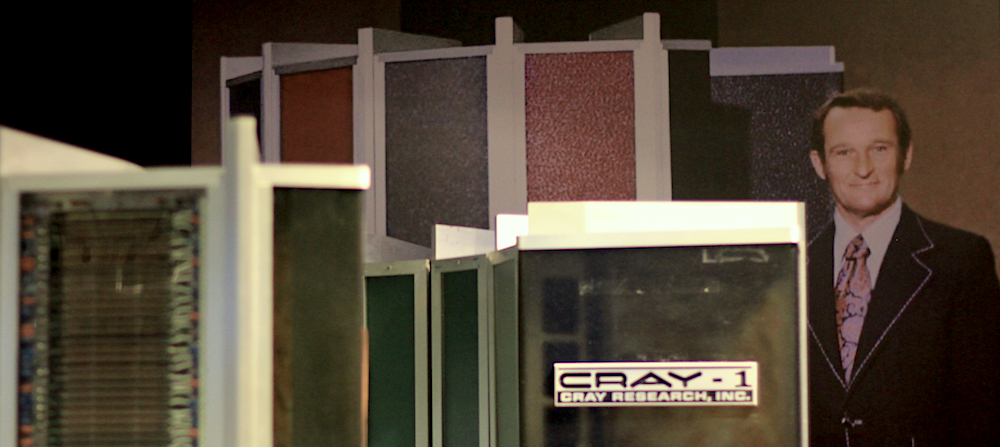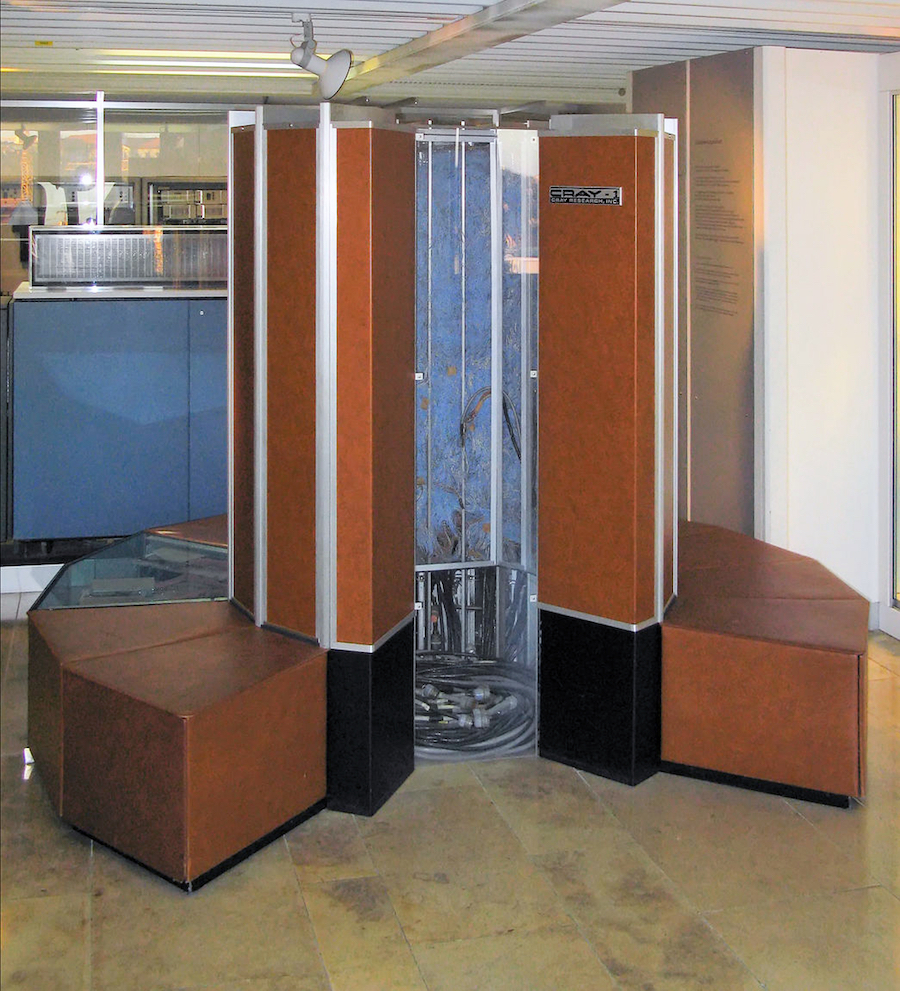 Seymour Cray
Seymour Cray

Above, Seymour Cray. Photo licensed under the Creative Commons Attribution 2.0 Generic.
Seymour Cray - Electrical engineer and supercomputer architect; born Seymour Roger Cray on September 28, 1925 in Chippewa Falls, Wisconsin. Known for developing the supercomputer.
Cray designed a series of computers that were the fastest in the world for decades, and founded Cray Research which built many of these machines.
Cray's father was a civil engineer who fostered Cray's interest in science and engineering. As early as the age of ten he was able to build a device out of Erector Set components that converted
punched paper tape into Morse code signals. The basement of the family home was given over to the young Cray as a "laboratory".
Cray graduated from Chippewa Falls High School in 1943 before being drafted for World War II as a radio operator. He saw action in Europe, and then moved to the Pacific theatre where he worked on breaking Japanese naval codes.
On his return to the United States he received a B.Sc. in Electrical Engineering at the University of Minnesota, graduating in 1949, followed by a M.Sc. in applied mathematics in 1951.
In 1951, Cray joined Engineering Research Associates (ERA) in Saint Paul, Minnesota.[8] ERA had formed out of a former United States Navy laboratory that had built codebreaking machines, a tradition ERA carried on when such work was available.
Cray quickly came to be regarded as an expert on digital computer technology, especially following his design work on the ERA 1103, the first commercially successful scientific computer. His work with super computers won him the nickname "The Wizard of Chippewa Falls".
Cray, along with William Norris later became dissatisfied with the ERA and founded Control Data Corporation in St. Paul, Minnesota. As CDC grew, Cray grew annoyed with management interferance and interruptions. Craving a quite work environment, Cray
wanted to set up a laboratory away from St Paul. After some debate, Norris backed Cray and allowed Cray to set up a new CDC laboratory on land owned by Cray in his hometown of Chippewa Falls.
"Computers should obey a square law -- when the price doubles, you should get at least four times as much speed" - Seymor Cray, Business Week (August 1963)
The new Chippewa Lab was set up during the middle of the CDC 6600 project. Although the CDC 6600 and CDC 7600 had ultimately been huge successes, both projects had almost bankrupted the CDC while they were being designed —
adding constraints on future development projects that eventually caused Cray to leave the the company.
The split was fairly amicable, and when Cray started Cray Research R&D in a new laboratory on the same Chippewa property in 1972, Norris invested $300,000 in start-up money. Cray Research R&D manufacturing was in Chippewa Falls with business offices headquarterd in Minneapolis.
After several years of development, Cray's first product was released in 1976 as the Cray®-1. As with earlier Cray designs, the Cray-1 made sure that the entire computer was fast, as opposed to just the processor.
The first Cray-1 system was installed at Los Alamos National Laboratory in 1976 and cost $8.8 million.
For more information on Seymour Cray, visit Wikipedia.
Seymour Cray
The father of supercomputing

Above: Cray®-1 super computer preserved at the Deutsches Museum (German Museum) in Munich, Germany.
Announced in 1975, the first Cray-1 system was installed at Los Alamos National Laboratory in 1976.
Eventually, over 100 Cray-1's were sold, making it one of the most successful supercomputers in history.
Above: A Cray Research-produced documentary on Seymour Cray, the "Father of the Supercomputing Industry." Seymour Cray was the founder of supercomputer manufacturer Cray Research. Cray has been credited with creating the Supercomputer Industry.
Above: "What's All This About Gallium Arsenide?", lecture by Seymour Cray. The video was recorded in November 1988. Cray had been exploring the use of gallium arsenide in creating a semiconductor faster than silicon. However, the costs and complexities of this material made it difficult for the company to support development of both the Cray®-3 and the Cray C90&153; supercomputers, causing Cray to spin off the Cray-3 project into a separate company (Cray Computer Corporation) in 1989.
Above: Seymour Cray gives a talk describing the Cray-1 super computer at UC Berkeley (1976).